Tigran Petrosian - The Master of Prophylaxis

Tigran Petrosian
Petrosian is credited with an unprecedented, unique understanding of positional chess. While others had learned how to position their pieces for better activity and prospects later on, Petrosian excelled in also positioning his forces Nimzo-like to condemn his opponents to long term passivity.
Kasparov: Petrosian introduced the exchange sacrifice for the sake of 'quality of position', where the time factor, which is so important in the play of Alekhine and Tal, plays hardly any role. Even today, very few players can operate confidently at the board with such abstract concepts. Before Petrosian no one had studied this. By sacrificing the exchange 'just like that', for certain long term advantages, in positions with disrupted material balance, he discovered latent resources that few were capable of seeing and properly evaluating.
Young Tigran
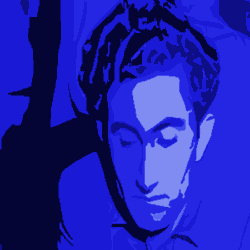
Young Tigran Petrosian
Tigran took up chess at the age of 8 and was a good player by the age of 12. The family was hit by tragedy, the children lost both parents while still young. He had to sweep the streets of Tblisi to survive. It was hard because he was not a strong boy and he was also a little embarrassed about being a street sweeper.
The other street sweepers, grown men, used to help him but he got sick and missed a year at school. His aunt helped the children out, giving them food to keep them going but life was hard. It was around this time that Petrosian first began to develop hearing difficulties.
Early Chess Development

The legend of Iron Tigran would reach far beyond Armenia
Petrosian was given the Nimzowitsch works, Chess Praxis and My System to study. The ideas and concepts in these books would form the basis for Petrosian's chess philosophy for the duration of his life.
Nimzowitsch's emphasis on tying the opponent up in knots and strangling him would take precedence over the dynamic attacks of Alekhine or the tactical thrusts of Reti. These ideas worked for him and within a year he beat the GM Salo Flohr when the latter visited Tblisi and conducted a simultaneous exhibition. He was a Candidate Master by the age of 17. He beat Genrikh Kasparian to the 1946 Armenian Championship and drew against Paul Keres at the 1946 Georgian Championship He won the 1946 Under 18 USSR Championship. He made it to the preliminary round of the 1947 USSR Championship and gained the title of Master during the tournament.
Moscow Move

Tigran Petrosian moved to Moscow aged 20
This success gained him access to the 1952 Interzonal Championship in Sweden. He finished 2nd there and was awarded the title of Grandmaster. It was also the spring board to his first appearance in the Candidates Tournament in 1953. The winner would challenge Botvinnik for the World Championship in 1954.
Petrosian finished 5th in a field of 15. Vasily Smyslov topped the table and challenged Botvinnik a year later. Petrosian played safe and ended up with very few losses but ultimately not enough wins to challenge for the tournament. This would set the tone for some time to come.
Steady Improvements
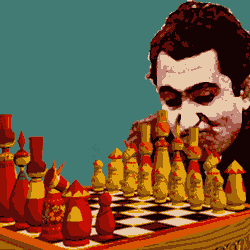
Iron Tigran was becoming known for conservative chess
But they bemoaned the lack of adventure in his play. They said he was more concerned with not losing than winning. This lack of ambition certainly prevented him from losing many games and earned him the nickname Iron Tigran. But the fear was that it might also prevent him from realizing his full potential.
He went through a number of tournaments in this way. Winning just a handful of games whenever his opponents erred, drawing most of them and losing hardly ever. He was usually well placed but rarely ever won tournaments during this period.
This was most evident at the 1955 USSR Championship. Petrosian finished the tournament as the only unbeaten player. He only won 4 games and drew 15. This was enough to give him a share of 3rd place but he was 3.5 points behind Smyslov in 2nd and 4.5 behind the winner Efim Geller.
Candidate Master

Tigran Petrosian was ever present in the Candidates Tournaments for three decades
He was taking more risks now although they were calculated risks. As in his joint 7th place finish in the 1957 USSR Championship, it did result in a couple of more losses than he was used to but he was winning more games. And crucially he would soon be winning championships.
He won his 1st USSR Championship in 1959 and followed this up with a 2nd victory at the 1961 USSR Championship. He tied for 2nd at the 1962 Interzonal Tournament and won the 1962 Candidates Tournament. Petrosian had earned the right to face Botvinnik for the World Championship.
Botvinnik vs Petrosian
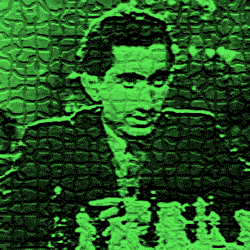
Tigran Petrosian ends the reign of Mikhail Botvinnik
Vasily Smyslov and Mikhail Tal had both snatched the title away from Botvinnik during the 50s. But on both occasions, Botvinnik had dug deep, trained hard and ripped it back in the customary rematch. Now Petrosian would throw down the gauntlet. He brought to the table the same significant edge that many young pretenders had before him.
Petrosian would cancel out Botvinnik's greater experience with youth and fitness. He went skiing every day during the build-up to the match as he figured that fitness could well be a factor late on. He may have been right because he overcame Botvinnik in the best of 24 game encounter on a score of 5-2 (15 draws).
Spassky Challenge
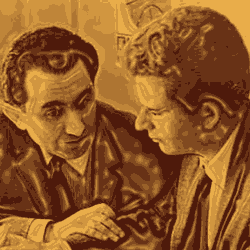
Tigran Petrosian and Boris Spassky
Petrosian knew that in 1966 he would face a new challenger. Boris Spassky emerged from the pack by winning the Candidates Tournament in 1965. He would provide a stern test for Petrosian. Petrosian passed the test, winning a tough encounter 4-3 =17.
Three years later Spassky was again the challenger. This time Petrosian could not stop him from taking the title. Spassky triumphed 6-4 =13.
It seems that the World Championship was a great weight for Petrosian and the pressure of such a heavy mantle may have inhibited his play. He himself said he was relieved to have been defeated and that his years as champion had been some of the most difficult of his life. With the weight of the world lifted from his shoulders, the newly relaxed Petrosian won the 1969 USSR Championship in a playoff against Lev Polugaevsky after the two finished joint top of the league table.
Post World Championship Years
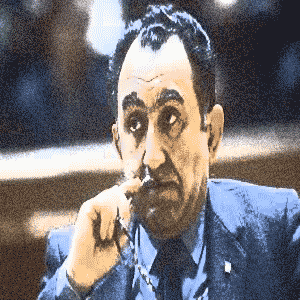
Tigran Petrosian had several big successes in the years after his reign ended
Petrosian again found himself straight through to the Candidates stage in the hunt for a 1975 match against Fischer. He beat the Hungarian, Lajos Portisch in the Quarter-final, but lost the Semi-final to Korchnoi. Petrosian, trailing by 2 points, withdrew from the match after just 5 games amid much controversy.
Petrosian won the last of his 4 Soviet titles at the 1975 USSR Championship hosted in Yerevan, Armenia. He won the 1976 Lone Pine Tournament. Petrosian had to play at the Interzonal stage in the following cycle, finishing 2nd at the 1976 Biel Interzonal before making it through in the playoffs. He reunited with his old friend Korchnoi at the Candidates Tournament. The acrimony hadn't died down as Petrosian was one of those to sign a letter condemning Korchnoi for his defection. Korchnoi beat Petrosian in the Quarter-final.
Later Years

Monument to Tigran Petrosian in Yerevan
His last notable result was 2nd in Tilburg in 1980. He posted a remarkable win here with the Black pieces over a young Garry Kasparov.
Tigran Petrosian died in Moscow in 1984 at the young age of 55. A memorial was unveiled at his grave depicting the laurel wreath of world champion. It also contains an image within a crown of the sun shining above the twin peaks of Mount Ararat. This is the national symbol of Petrosian's native Armenia. A monument honoring Petrosian was also erected in Yerevan, in the street named after Petrosian.
Legacy of Petrosian
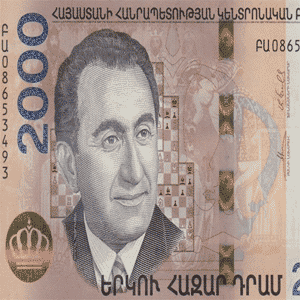
Petrosian showed that defensive resources in chess had previously been largely untapped
Petrosian was the Immovable Object of chess. And it's because of his extremely cautious style that his remarkable chess talents aren't more celebrated. Sure his positional awareness was as deep as that of Botvinnik in his hey day. People that stereotype him as a boring player either forget or never knew that his tactical nous was in the same league as Tal.
He introduced the motif of exchanging a rook for a minor piece when it gave him a long term positional edge. His ability to evaluate these positions in this way was unprecedented. As Kasparov said, no one had studied these concepts before Petrosian. Understanding when to do this was second nature for him.
Moving On
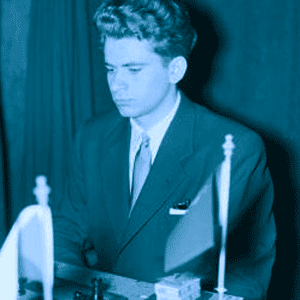
Boris Spassky
But, looking at his games, if you get a feel for his chess philosophy, you gain serious respect for his positional awareness. With his exchange motif, he is telling us in some positions, the arrangement can make up the difference between a Rook and a minor piece, the minor piece can be equal or even better.
Now we will turn our attention to the man that took Petrosian's crown in 1966. That man was Boris Spassky.






